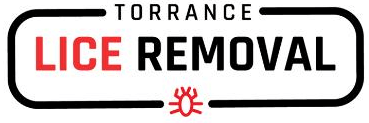Facts of Head Lice for the New School Year
Monday, September 5, 2022
Your child is just starting to get back into their “school routine” when you notice a small whitish-gray insect on their neck. Your heart sinks while your hand instinctively reaches up to scratch your head. You know immediately what is on your child — lice. Now what?
First and foremost, there’s no need to panic. Head lice are very common in school-aged children. And though lice cannot actually hop or jump, they sure seem to spread quickly. In fact, an estimated 6 million to 12 million lice infestations occur in children every year, according to the Centers for Disease Control and Prevention (CDC).
To help you remain calm, take a look at the facts of lice.
What are head lice?
Head lice are tiny whitish-gray insects
about the size of a sesame seed. They are most commonly found behind the ears
and around the neckline.
Lice feed on small amounts of blood from a person’s scalp. These bites cause itching, so your child will be scratching at their head frequently. You may also see bite marks and irritation around your child’s hairline.
Additionally, lice can live one to two days without a meal, so you might see these fast-movers crawling on your child’s bedding, carpet, or toys.
Female lice lay eggs, called nits. These small, yellowish-white, oval eggs may be attached at an angle to the side of a hair strand. According to the CDC, female lice each lay about six nits a day. After hatching, they can live on your child’s scalp for about 30 days.
A common misconception, lice do not discriminate. They can attach to dirty or clean hair, find their home in rich or poor families, and can live in all places and communities. Personal hygiene has no effect on lice.
How did my child get lice?
Head lice most commonly spread from
close, prolonged, head-to-head contact. Think selfies, hugging, sleeping next
to each other. Mom’s with children under
12 are also particularly prone to get lice since they are still having close to
head-to-head contact with their kids.
How do I treat head lice?
When you notice your child has head
lice, make sure to check other members of your family as well. You should also
notify your child’s school and their friend’s parents.
There are several ineffective at-home remedies for lice circling the internet, like “suffocating” lice with mayonnaise or oily products. However, there is no scientific evidence that this works. You also cannot use hot water to wash out lice.
Lice are very hardy, and it is difficult to drown or suffocate them. Nits are also hard to remove because they stick to hair shafts with a glue-like substance.
Fortunately, Torrance Lice Removal can get you lice free in about 1 hour using our proven, 5-step treatment process that has no chemicals and comes with our 30-day lice free guarantee.
In addition to removing lice from your child’s hair, you should also make sure to remove lice from your home.
“Any fabrics or soft toys that have come in contact with your child’s head recently should be washed in hot water and dried on high heat. If items cannot be washed, they should be put in bags and set aside for two weeks.
This includes cleaning of your child’s bedding, towels, and clothing. Aside from that, you should also vacuum your furniture, carpets, and car seats.
To avoid another lice infestation, teach your child to avoid head-to-head contact with children and not to share hair accessories.
Additionally, make sure to check your child’s hair regularly throughout the year for lice.

